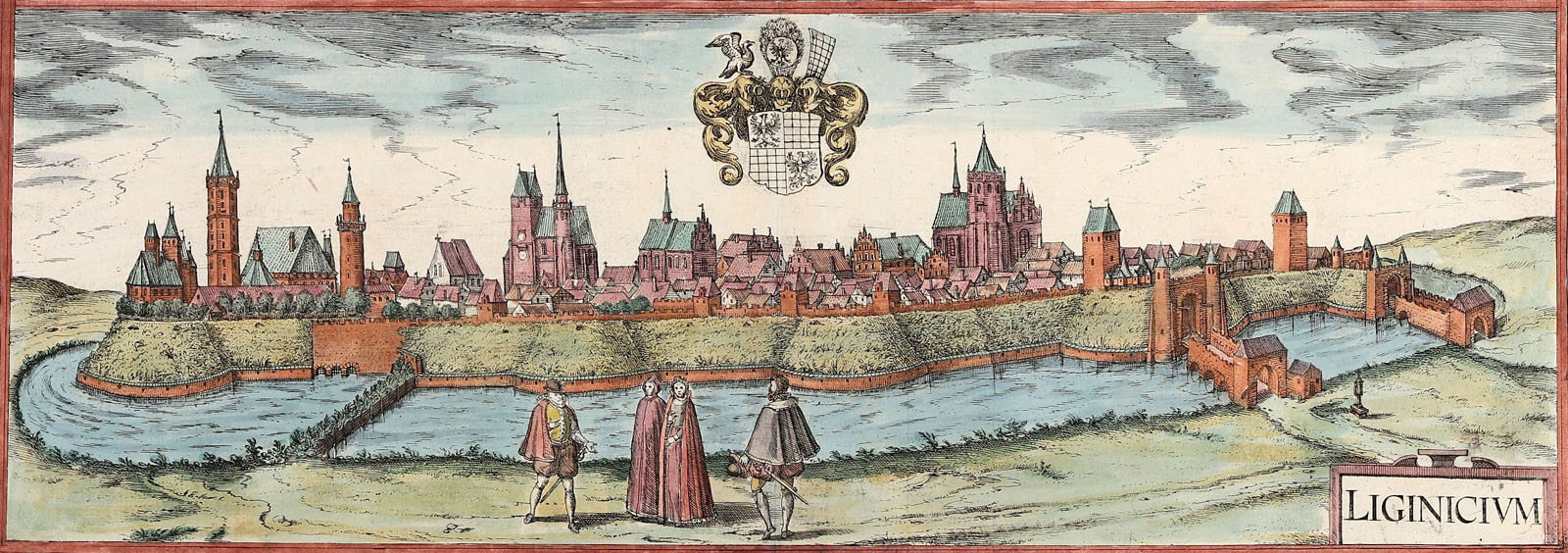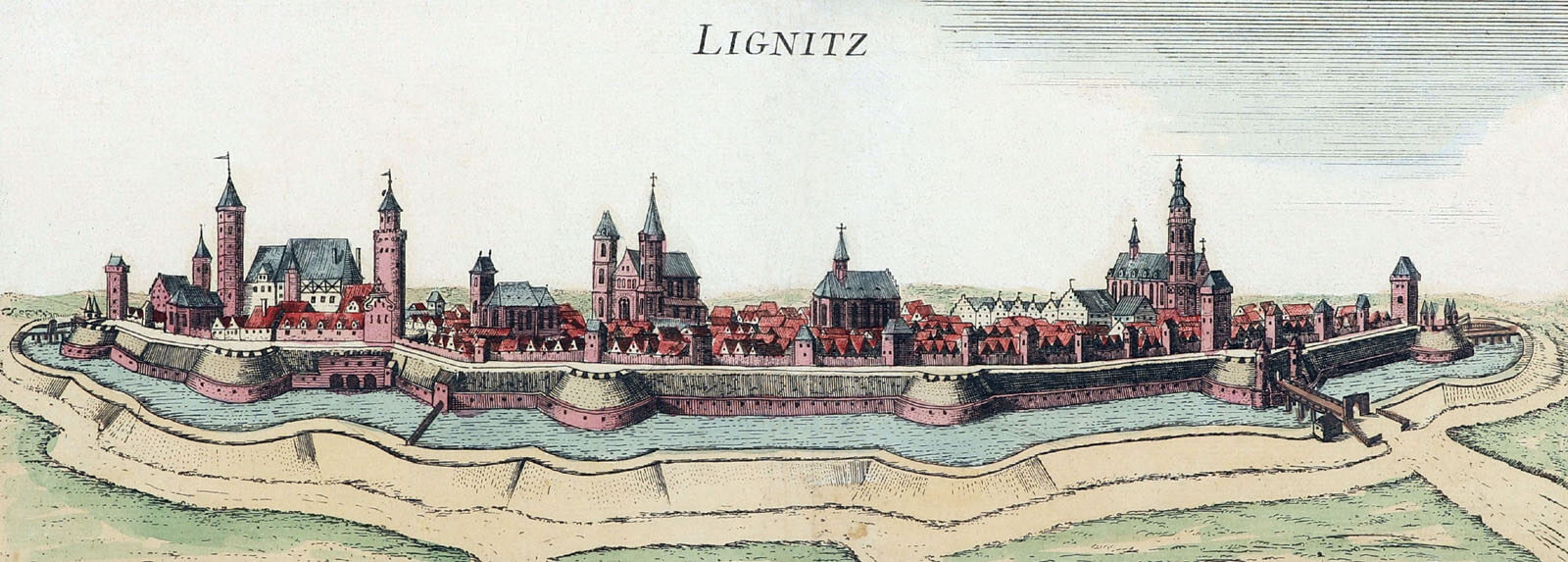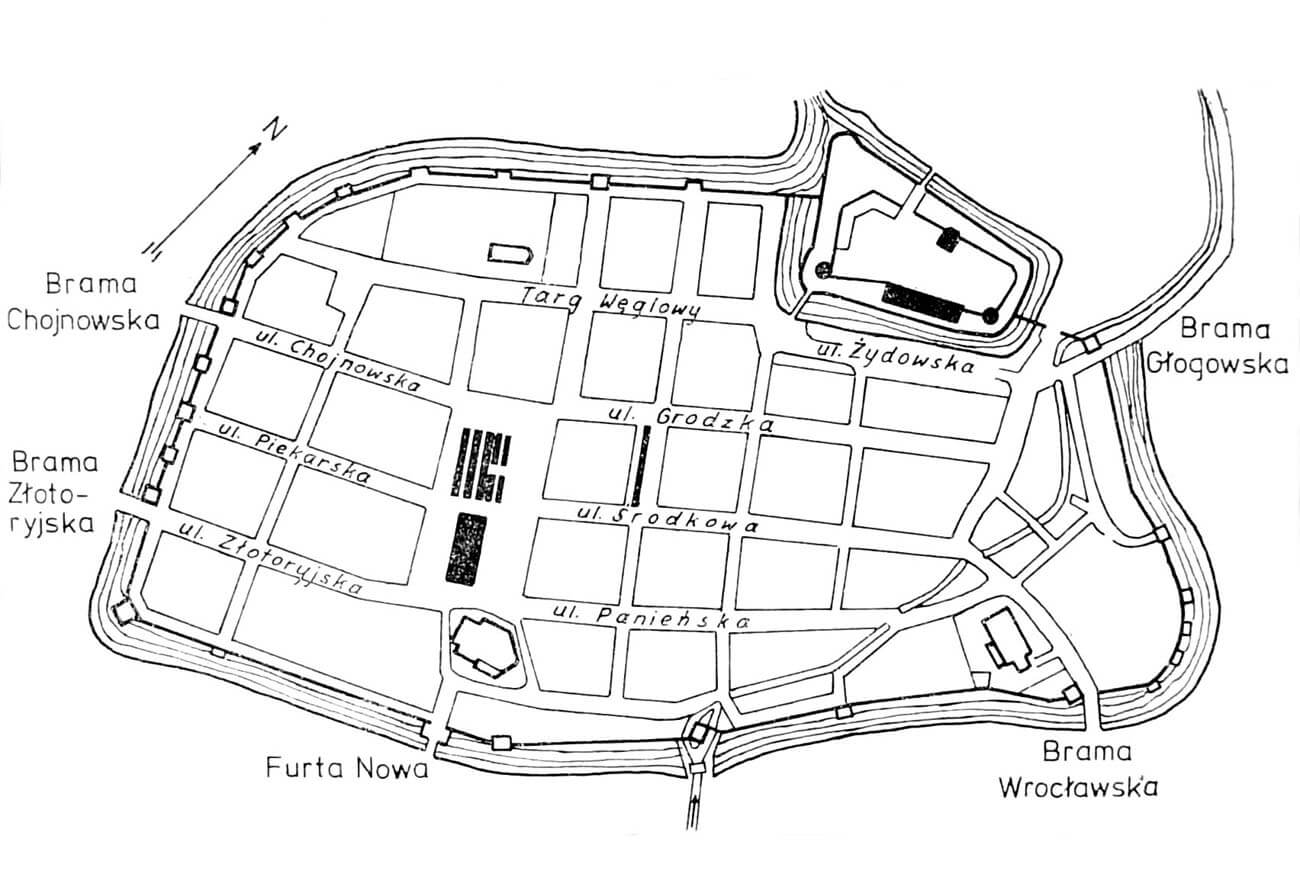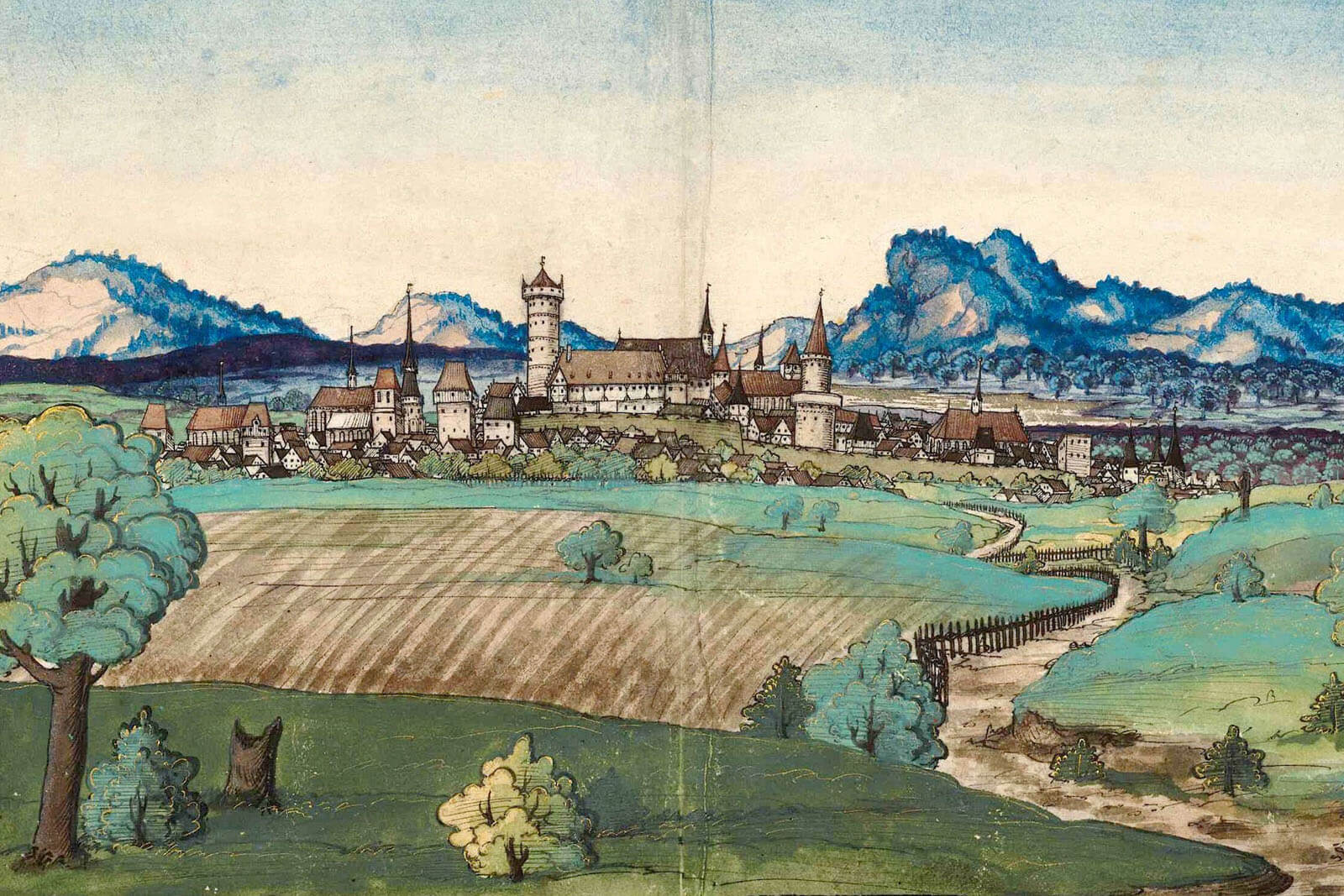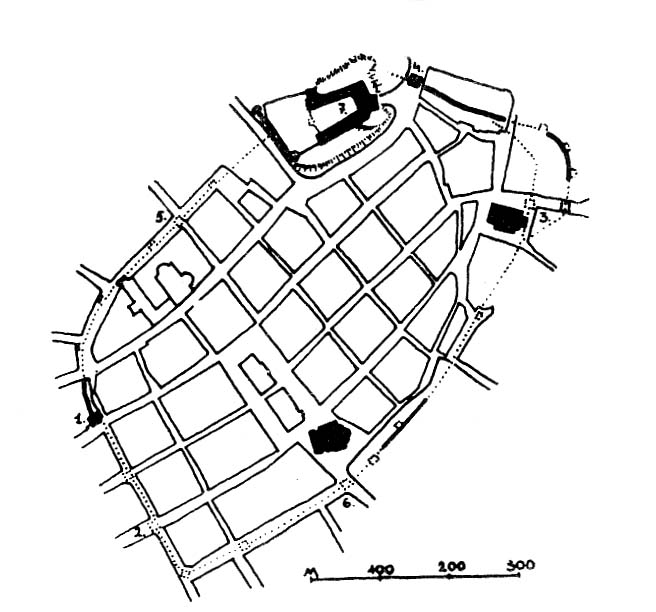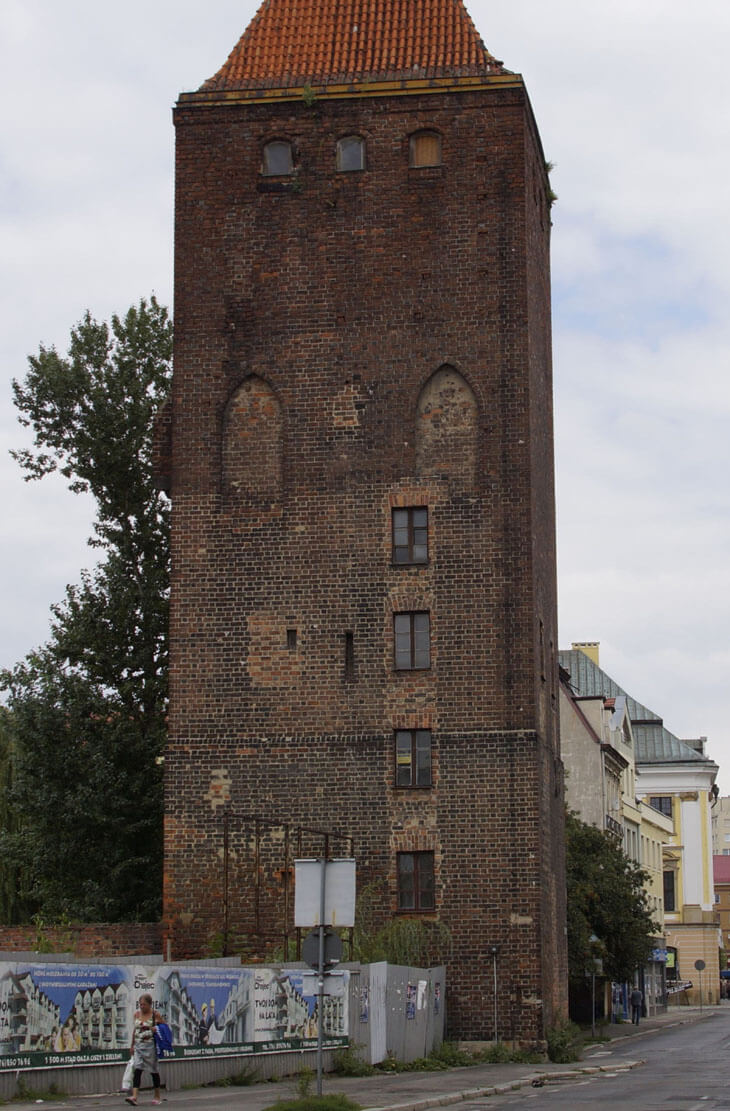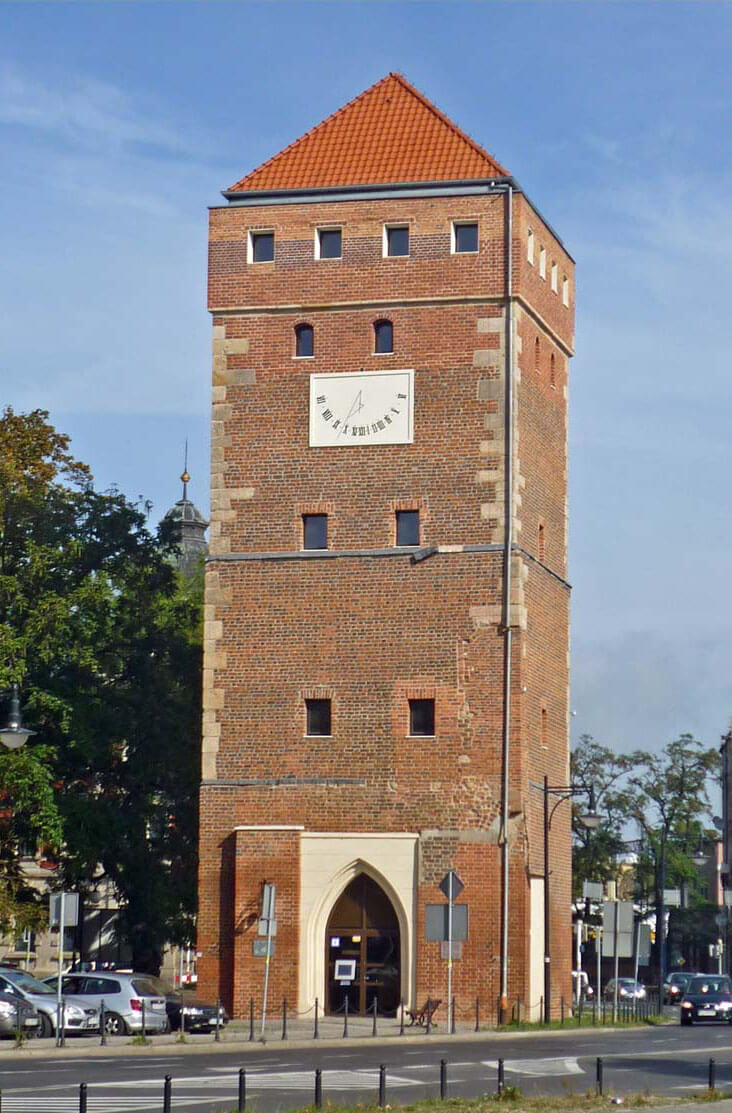History
Located at the crossing of the Kaczawa River, at the intersection of medieval trade routes, Legnica was initially a borough of the castellan stronghold, which was the seat of the Silesian dukes from the beginning of the 13th century. In 1248, the borough and the castle began to play the role of the capital of the Duchy of Legnica, and in 1252 obtained town charter. It probably affected the decision to build a perimeter of the brick defensive walls, erected around 1281-1326. After the great fire of the town from 1338, along with the extension of its area from the south, east and west, the construction of a second strip of defensive walls was undertaken. Permission for its erection was issued in 1345 by Prince Wenceslaus.
During the Hussite wars, works were carried out in the years 1428-1432 to strengthen the fortifications, because the current walls, damaged by fires and floods, not renovated for almost a hundred years, were weak and the moats were too narrow. Perhaps thanks to these renovations, when after the destruction of the neighboring towns of Chojnów, Lubań and Złotoryja, the Hussites stood near Legnica in 1430, the town managed to defend itself and only the not fortified suburbs were destroyed. However, the large cannon purchased in Nuremberg by Prince Louis II and bought back by the burghers for 330 Hungarian florins, did not raise the protection. Its role was more decorative and presentable.
Townspeople and local peasants played an important role in the fortification and defense of the town. During periods of increased danger, they paid extraordinary war taxes. For example, in 1413 1000 fines were collected, in the following year 2909 fines, and a few years later the sum increased to 3600 fines. Every resident was obliged to participate in the defense of the town, while each guild master and owner of the house had to own weapons and skills to wield it. Already in the fourteenth century there was a town arsenal in Legnica, and the weapons and armaments found in burgher houses were included in the records of the town authorities. When preparations for defense against the Hussites began in 1427, the town next to a large number of mercenary soldiers hired 40 well-armed shooters, ahead of other major Silesian cities in terms of defense readiness.
In the first half of the 16th century during the reign of Prince Frederick II, when the Turks after beating Hungary in 1529 threatened the Czech kingdom and the cities of Silesia, the next stage of expansion of the fortifications took place. By 1533, the moats were widened, the city gates were strengthened and the ramparts were raised. The implementation of these construction works did increase the city’s defenses, but it resulted in the total destruction of buildings nearby the fortifications. The Benedictine monastery, collegiate church of Holy Grave and the Bernardine monastery were demolished. Works continued until 1547, but it were not completed at that time.
In the 17th century there were further extensions and modernizations of fortifications related to the progressive development of firearms. Early modern bastion fortifications were introduced at that time. In the mid-eighteenth century, the gradual dismantling of the outdated medieval defensive walls began. Initially, external fortifications were removed, in place of which the townspeople created gardens. After 1860, the fortifications were demolished almost completely. Only the Głogowska and Chojnowska gates and small fragments of the walls have been preserved.
Architecture
The perimeter of the city walls was erected on the plan of an elongated oval with longer sides on the north-east, south-west line. From the east, the town was protected by the Kaczawa River with its arms, backwaters and wetland areas. On the northern side, however, Czarna Woda, which flows into Kaczawa in the north-east, ran its course a bit further.
The town walls were built of bricks, had a considerable thickness of about 2 meters and a height of 5.5-6 meters. In their crown there was a wall-walk for defenders, protected by a breastwork with a battlement. The walls were reinforced with 26-30 quadrangular half-towers, placed rather irregularly around the entire perimeter, most densely on the most endangered south-west and west sides, where it were located a few dozen meters apart, i.e. within the range of an effective crossbow shot. The original towers were opened on the city side and protruded a few meters in front of the wall face to allow for side fire. Towers were one storey higher than the defensive wall, initially topped with a battlement similar to it, later mostly replaced with hip roofs.
Four gates led to the city: Złotoryjska from the south, Chojnowska from the west, Głogowska near the castle from the north and Wrocławska from the north-east. There were also two wicket (postern) gates: Tumska (Rycerska) and New in the south-east. Entry portals were placed in four-sided gatehouses, taller and more massive than regular towers. The main gates in the 15th century were reinforced with foregates, consisting of necks ending with two towers flanking the passage. The entire fortification was connected in the northern part with the castle walls, which were separated from the town side by their own moat.
Current state
To this day, the Głogowska Gate on Nowa Street, near the castle, and the Chojnowska Gate at the intersection of Chojnowska and Gwarna streets have been preserved. Also visible are small fragments of the defensive wall at the Chojnowska Gate and the bastion at the corner of Warzywnego Square and Piastowska Street. Both gate towers were partially rebuilt, especially their facades were pierced with a large number of early modern and modern windows. In addition, the interior of the Chojnowska Gate tower was completely destroyed during the fire of 1917.
bibliography:
Legnica. Monografia historyczna miasta, red. M.Haisig, Warszawa 1977.
Przyłęcki M., Miejskie fortyfikacje średniowieczne na Dolnym Śląsku. Ochrona, konserwacja i ekspozycja 1850 – 1980, Warszawa 1987.
Przyłęcki M., Mury obronne miast Dolnego Śląska, Wrocław 1970.

